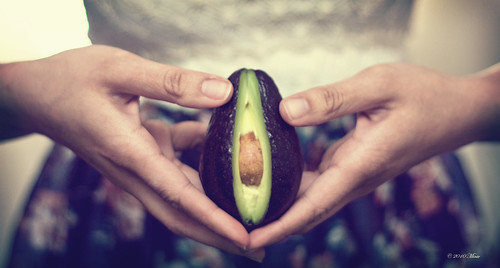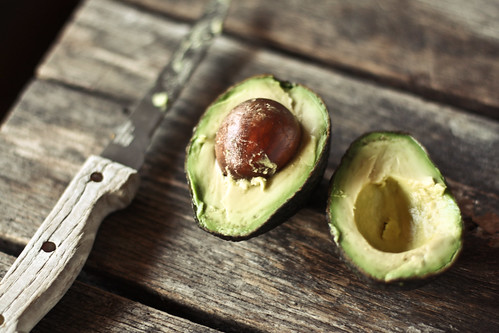Avocado Oil
Persea americana, native to central Mexico (the state of Puebla), and is related to cinnamon, camphor and bay laurel. It is a very ancient tree that was used by humans for at least 12,000 years. It’s fruit was designed to attract very large mammals which are now extinct (i.e.: ground sloths or gomphotheres). The seed itself is inedible and rather toxic to many animals, and would be spread in the excretions of such large mammals, sprouting easily as it would remain undigested.
Avocado, like olive oil, is a rare case when a vegetable oil is derived from the fruit rather than the seed of a plant. It is cold-pressed from the pulp of the fruit, which may contain between 18-24% oil, most of which is monosaturated fat. Avocados are extremely high in potassium, vitamin E, vitamin K, B vitamins, as well as a high fiber content. It was shown to lower harmful cholesterol level in the blood, and is also studied for its potential anti-cancer properties.
The fruit’s culinary uses are wide and versatile. Because it is easily grown in sub-tropical and Mediterranean climates, and can tolerate cold weather (as low as -5C in some cultivars), it is grown in many parts of the world – Mexico, Chile, in the US (states of California and Florida), Indonesia, Brasil, Israel, Lebanon, South Africa, Australia and New Zealand. And the cuisines that utilized it are versatile and innovative. It is mostly used raw, because cooking making it extremely bitter and inedible (the Haas cultivar can tolerate a small amount of heat and may be used in preparation of “avocado soup”).
Avocado’s high oil content makes it ideal for condiments and in savoury dishes such as sandwiches, condiments and sauces – the most famous of them being, of course, Guacamole (“avocado sauce” - a condiment, dip or sauce made with lime juice or vinegar, herbs, spices and hot peppers). Avocado slices are used in Maki (rolled sushi) – as in California roll or avocado roll, where its fatty contents pair nicely with the fish or substitute it for vegetarian rolls, and it works beautifully in vegetable salads – either sliced or in the dressing.
Avocado’s creamy texture and naturally mildly-sweet flavour make it a perfect component in raw, vegan and vegetarian desserts. Try mashing it with bananas for a custard-like breakfast raw “pudding”, garnished with fresh dates; or add it to milkshakes, smoothing or sliced in fruit salad (be sure not to use overripe avocados - or they will be too mushy and “oily” and not as sweet). You can even make your own vegan “eggnog” using avocados (I made one today with avocado, coconut milk, rum and nutmeg and it was very good and brightly green!).
As for avocado oil itself, which is the real topic of this article, it is particularly fabulous because of its antioxidant nutritional value. High smoking point (the refined avocado oil goes as high as 520°F = 271°C) makes it suitable for cooking, sauteeing, frying and deep-frying. It has a very mild, slightly nutty flavour that is quite easily adaptable.
In cosmetics and body care, avocado oil is prized for its regenerative and moisturizing qualities. It is full of nutrients such as vitamins A, D and E, as well as lecithin, proteins, chlorophyll, glycerides and omega-3 fatty acids. It is a very thick oil, and it’s best not to use more than 25% in a base-oil blend (meaning: you should blend it with other oils if you were to apply it to the skin in a massage oil or a body oil). Avocado oil is also used in soaps to add moisturizing qualities to a soap bar, because some of its contents do not get saponified and preserve their softening qualities. Its thickness also makes it a good addition for body butters and making rich body lotions. It's restorative and helpful especially for dry, scaly skin.
Similarly, use it for hair masks or hair treatment for curly or dry hair and itchy, flaky, scaly scalp. The lecithin is a natural sunscreen, so it’s a good natural protection for both skin and hair from UV rays. You will also find avocado oil in some high-end haircare products such as shampoo, conditioner and masks – but you can also create your own!


